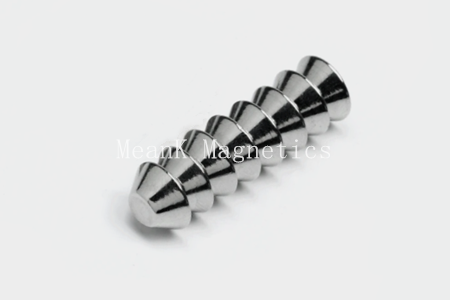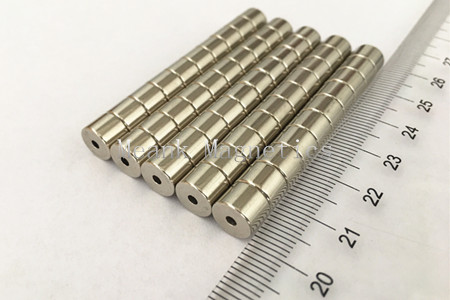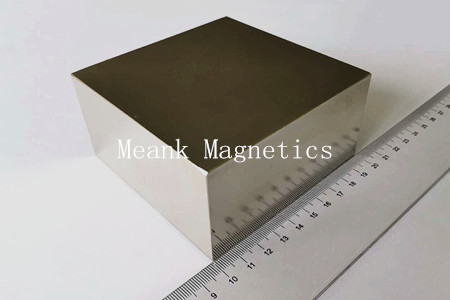This is Japan technology forced out by China in 2010 when the rare earth price craze increased. in fact, it was in order to save money by reducing the use of Dy. Japanese experts said there were to methods can reduce the dosage of Dy in neodymium iron boron magnets, crystal grain fining and grain boundary diffusion method. The crystal particle refinement is expected cut Dy content about 1-2%, the grain boundary diffusion method is expected to cut about 2-3%. The total calculation can be reduced by 5%.
At present, many Chinese
NdFeB magnets companies are trying to study infiltrating Dy technology, some are already successful, some enterprises are still trying to break through. According to experts, this technology has a bottleneck, it's only used in small magnets, and the infiltration of dysprosium depth is very shallow, the process cost is too high.
However, recently the Ames laboratory of United States Department of energy exposed the news, they developed new magnet material which can be used for electric vehicle electric motor and wind turbines, instead of expensive dysprosium, its performance is more excellent and more low cost. This technology is sure higher than permeability by technology and can be used to the large size of
NdFeB magnet.
This material is to add cerium and cobalt into NdFeB (composed of neodymium, iron, boron three elements), compared with traditional sintered dysprosium metal, cerium and cobalt elements are with lower cost and same magnetic properties. After adding cerium and cobalt into neodymium iron boron magnets, under the condition of high temperature, it still has good magnetic properties, its coercivity (intrinsic coercivity) T ≥ 453K(the highest temperature was about 180 degrees Celsius)
A series of tests from the Ames laboratory Arjun Pathak and Mahmud Khan of University of Miami found that under the condition of high temperature, the coercivity of cerium-containing magnets - the anti-demagnetize ability of magnetic material, far more than the material contain Dysprosium and its price at least 20% to 40% cheaper than the latter.
Previous researchers have tried to use cerium in rare earth magnets, but have failed, the researchers say this is because of the Curie temperature (also known as Curie, is phase transition temperature that the magnet change from ferromagnetic phase transition into paramagnetic phase) decreased. But the research group found that mix cobalt and cerium element instead of dysprosium will not let the magnets lose magnetism.




